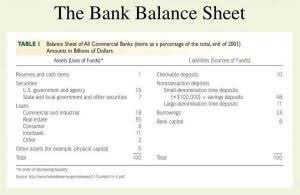
Assume that the sporting goods store sells the 250 baseball gloves in goods available for sale. All costs are posted to the cost of goods sold account, and ending inventory has a zero balance. It no longer matters when a particular item is posted to the cost of goods sold account since all of the items are sold. LIFO usually doesn’t match the physical movement of inventory, as companies may be more likely to try to move older inventory first. However, companies like car dealerships or gas/oil companies may try to sell items marked with the highest cost to reduce their taxable income. For this reason, companies must be especially mindful of the bookkeeping under the LIFO method as once early inventory is booked, it may remain on the books untouched for long periods of time.
- It is simple—the products or assets that were produced or acquired first are sold or used first.
- To calculate the Cost of Goods Sold (COGS) using the LIFO method, determine the cost of your most recent inventory.
- For many companies, inventory represents a large, if not the largest, portion of their assets.
- Cost of Goods Sold, or COGS, is the amount of money a business pays to produce the number of goods sold in a given period.
- Another difference is that FIFO can be utilized for both U.S.- and internationally based financial statements, whereas LIFO cannot.
- Contrarily, LIFO is preferable in economic climates when tax rates are high because the costs assigned will be higher and income will be lower.
Do you own a business?

An asset management technique, in which the actual issue or sale of goods from the stores is https://www.facebook.com/BooksTimeInc/ made from the oldest lot on hand is known as First in, first out or FIFO. It follows a chronological order, i.e. it first disposes of the item that is placed in the inventory first. That is why this method of inventory valuation is regarded as the most appropriate and logical one.
Why Is the FIFO Method Popular?
Typical economic situations involve inflationary markets and rising prices. The oldest costs will theoretically be priced lower than the most recent inventory purchased at current inflated prices in this situation if FIFO assigns the oldest costs to the cost of goods sold. The FIFO method avoids obsolescence by selling the oldest inventory items first and maintaining the newest items in inventory. The actual inventory valuation method used doesn’t have to follow the actual flow of inventory through a company but it must be able to support why it selected the inventory valuation method.

The easiest way to calculate stock’s target price and why the target price is important.
- A financial professional will offer guidance based on the information provided and offer a no-obligation call to better understand your situation.
- This means that if you purchased a batch of 300 goods and only sold 150, you would multiply the purchase price by 150.
- Once March rolls around, it purchases 25 more flowering plants for $30 each and 125 more rose bushes for $20 each.
- It should be understood that, although LIFO matches the most recent costs with sales on the income statement, the flow of costs does not necessarily have to match the flow of the physical units.
- The FIFO and LIFO methods impact your inventory costs, profit, and your tax liability.
- It allows them to record lower taxable income at times when higher prices are putting stress on their operations.
Another inventory cost accounting method that is also widely used by both public vs. private companies is the Average Cost method. Due to economic fluctuations and the risk that the cost of producing goods will rise over time, businesses using FIFO are considered more profitable – at least on paper. Companies that sell lifo and fifo perishable products or units subject to obsolescence, such as food products or designer fashions, commonly follow the FIFO inventory valuation method.
The inventory item sold is assessed a higher cost of goods sold under LIFO during periods https://www.bookstime.com/ of increasing prices. The average cost is a third accounting method that calculates inventory cost as the total cost of inventory divided by total units purchased. Most businesses use either FIFO or LIFO, and sole proprietors typically use average cost. It is up to the company to decide, though there are parameters based on the accounting method the company uses.
